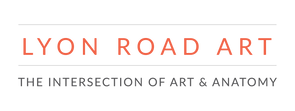I would say I get asked most often about this: Fellow artists who want to delve in to the world of print-making are wondering about how to get their art from paper to computer.
What I did at first: I invested in a nice Nikon DSLR camera, which I got refurbished on Amazon, and photographed my work. I tried to do it outside when it was nice, but the pictures still ended up pretty dark and I had to do extensive post-production work in photoshop with curves and color balance to make them look like the original again.
What I do now: My husband got me an Epson Perfection V550 scanner for Christmas. Where had this been all my life? The results are very high quality (I can easily stretch 9x12 paintings to 16x20 without compromising resolution). I also have to do very little post-production work in Photoshop. All I do is clean up the white space, so you can't see the teeth of the watercolor paper. I also sometimes add a slight S curve in to ensure the colors have enough contrast and vibrancy.
The only caveat with this scanner is that I can only scan size 9x12 (any larger scanner was cost-prohibitive). So now I paint smaller and just expand it on the computer for my larger prints. If I have a larger painting for some reason, I'll sometimes revert back to my DSLR, but more often just take a quick trip to FedEx. They have large-format scanners that you can use, for just a few dollars per scan. I also recommend this if you're thinking about purchasing a scanner. You can see how your images turn out and if it is worth investing in a scanner.
Consensus: While I love having a good camera for other reasons, I definitely would have just purchased a scanner from the beginning. Unless you have mad photography skills, good lighting and a great tripod, scanning is just plain easier with more consistent results.




2 comments
Hello Patricia!
This is Reagan, Kaitlin’s studio assistant. For scanning mid sized works on paper you can scan sections of it and join it together in photoshop. The process can be a little tedious and is prone to errors as you first get the hang of it. The long short of it you scan each corner of the painting and merge them together. While it is possible to do very large paintings in little sections I would suggest not doing so for painting requiring more than 4 scans. Here at LRA anything requiring more than I personally photograph using standard fine art reproduction techniques.
Let me know if you have any other questions,
Reagan
Hi!
I came across your blog while looking for a good (but affordable) scanner for my art. I have drawings of 9″×12″, will they fit in the Epson Perfection V550 scanner? You mentioned that you can stretch paintings of that size, but in the scanner’s specifications doesn’t sound like it would fit. Please let me know :)
Thanks!